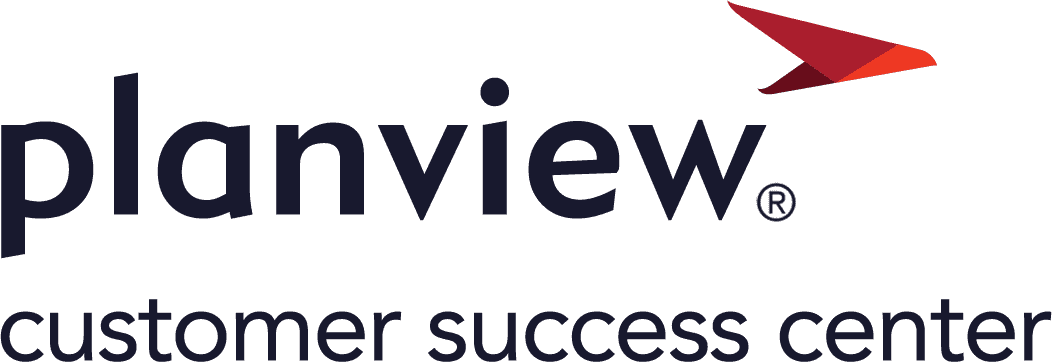AdaptiveWork process flows
Overview
TThis guide provides an in-depth walkthrough of how organizations can use Planview AdaptiveWork to support initiative planning within portfolios. Learn how to define, organize, and manage strategic initiatives by configuring portfolio structures, building initiative roadmaps, and tracking progress across lifecycle stages. Whether you're aligning strategic goals to project execution or managing initiative milestones and financials, this guide covers the configurations, processes, and best practices needed to deliver business outcomes through strategic portfolios.
Process steps

| Process step | Description |
|---|---|
|
Configure strategic initiatives |
An Initiative is a plan that encompasses an organization’s strategy. In AdaptiveWork, initiatives are created as a portfolio. Initiatives must be defined as a portfolio type with related attributes. This step must be completed by the organization’s administrators. For more information on how to add a portfolio, see Portfolios. |
|
Create, describe, and categorize initiatives |
Once initiatives have been defined and made available to users, they can be created by the appropriate personnel. Certain fields may be required to ensure initiatives are well defined, categorized, and assigned to the right area(s). This can be accomplished on the initiative’s respective Item Details view. |
|
Create initiative roadmap |
Building an initiative roadmap will ensure there is a clear path and make it easy to track actual work against estimated work, allowing for easy adjustments. To build out an initiative roadmap, you will start by adding in key milestones and dates within projects, which creates a project roadmap. These project roadmaps can then be related to the initiative (portfolio), where they can then be viewed under the portfolio roadmap umbrella. For more information, see the following articles: |
|
Manage lifecycle steps |
As the roadmap is updated over time, lifecycle steps may need to be completed. Lifecycle steps will be defined for the portfolio by the organization’s administrators, which may include the Lifecycle app. Associated users may be notified of lifecycle steps via Discussions and/or email. For more information, see Lifecycle states. |
Best practices
Focus on transformation
Although it may seem like any other organizational hierarchy at the surface level, simply using initiatives to tie projects and programs together is not enough. Initiatives must deliver on strategy by transforming the business outcomes through underlying projects and programs.
Invest in your strategic structure
To achieve strategic objectives, the initiatives, programs, and projects must be organized efficiently and thoughtfully to support one another in an effective strategic structure. Invest time thinking through this structure, identifying opportunities for connection and collaboration at all levels.
Be proactive, not reactive
Many organizations or parts of organizations live in a reactive model, and when switching to an initiative-based model, just fill their initiatives with the reactive model they have in place. This defeats the purpose of initiatives entirely, which is to make intentional decisions about what to invest time and money into.
Find a financial planning balance
There has been much said in the debate about top-down and bottom-up financial planning. In practice, it is often best to use a combination of the two, allowing for organic planning from those on the ground but also intentional decision-making on investments for those at the top. Find the right balance between the two so you have the best of both worlds.
Ensure access to data
At the initiative level having access to all relevant data is more crucial than ever. Ensure all internal and external data is put together into easy-to-read reports or dashboards, especially data coming from underlying programs and projects. Access to this data will allow for quickly changing course as needed.
Plan for change
The world we live in and the ways we do business are changing faster than ever before. Good initiative owners will be ready to assess and reassess to quickly pivot when there is a need. Consider implementing a regular process with key decision makers to continually assess whether initiatives are still relevant and aligned with market dynamics.
Align management on decisions
For the initiative model to work, the entirety of the management team must be on the same page. Ensure the entirety of your management team is both informed and on board when it comes to new decisions being made, so they can continue to effectively drive the transformation within their own realm.
Create roadmaps
Roadmaps are a great tool for easy visualization of the strategic plan that includes a tangible timeline with key tasks. Roadmaps go hand-in-hand with initiatives as they help with both keeping the initiatives on track, as well as being able to easily show progress for key stakeholders or decision makers.
Monitor demand and capacity
While it’s important as an initiative manager not to get too in the weeds, it is also crucial to stay on top of demand and capacity to ensure initiative work is effectively prioritized and that key resources are not being pushed to burn out. Keep up to date on this information and be ready to adjust as things change.

